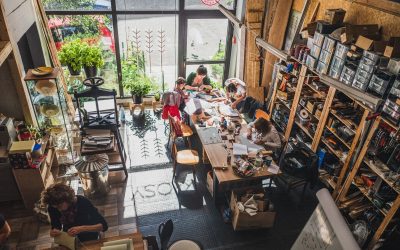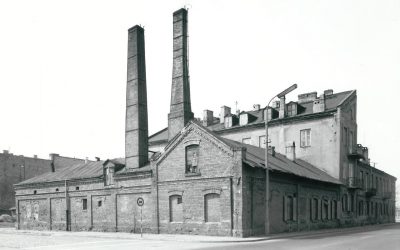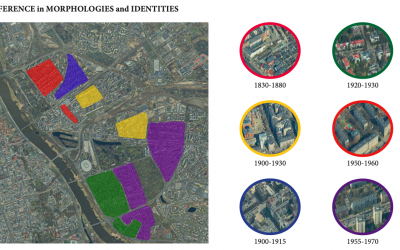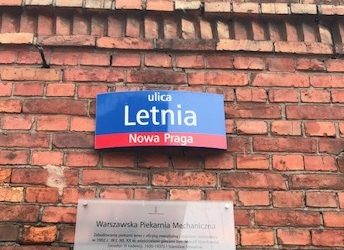PRAGA DISTRICT WARSAW, POLAND
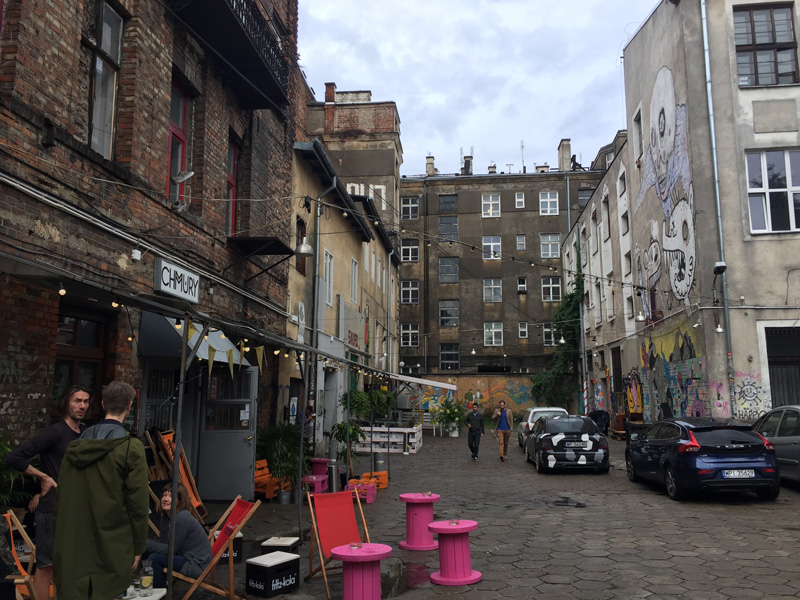
The Praga district, located on the right bank of the Vistula River is one of the smallest in size but the most problematic in terms of life quality areas of the Warsaw. Being the part of the oldest and most densely populated core of the city it has been labeled as the poorest, less developed, most dangerous but same time the most genuine. Since second half of the 19th century its spaces have been shaped by peripheric role to the prominent left river bank districts. One can still find here traditional quarters of the tenement houses, smaller and larger factories and other elements of the multicultural and at the same time industrial past.
The district history till 1989 was very much linked to the production and industry. Since the collapse of the communism liberal economy forces started to reshape city structure. For many years of the transformation the oldest parts of the Praga district were left aside keeping the status of the urban reserve of “old-time Warsaw”. The last years brought new investments to the district public as well as private. The next ones are to come.
Having heavily stigmatized image, today it is an area with social deprivation and, at the same time, the scene of an interesting cultural revival which feeds on its specific status and identity. However the heritage identity have been often exploited as a branding tool rather than seen as an important value for the local community. Praga District today is the target of the large-scale urban rehabilitation scheme of the city of Warsaw as well as several grass-roots and top-down activities and projects.
The mission of PragaLAB is to connect and include the values of Praga’s heritage to existing and planned municipal processes targeting the development of local economy, and especially at the circular economy and sustainable development. It is also to empower bottom-up activities which are related to such heritage. WORK is the main theme linking several aspects of the PragaLAB activities, the tangible and intangible heritage elements together: namely buildings, sites, stores, public space as well as intangible heritage including skills, pride of the history of local innovation, work and production. The intangible heritage of Praga as an industrial and artisanal hub of Warsaw, together with existing skills, can establish a good base for a new wave of production and crafts.
Aims:
- To map, connect and empower all the actors interested in protecting heritage values and developing contemporary ones for the benefits of the local economic development.
- Creation and testing tools and models that will aim to empower members of the local community and NGOs in the redevelopment processes.
- To evoke consciousness of the special architectural and social heritage of the area, encourage economic activities based on the existing built and human capital (stores and craftsmanship).
- Beside the new activities to help the already existing ones to overcome the bottlenecks and institutional barriers to be rooted in Praga and to empower its heritage.
Work so far:
Research was conducted to identify (1) the most relevant values of local heritage and (2) the groups of stakeholders with whom the cooperation should be established in the first months of PragaLAB operation. Among other forms of research (desk research, following social-media, participation in public debates and events, following the relevant exhibitions and artistic activities) the team carried out several interviews with the members of heritage community, involved in specific activities: architects; local entrepreneurs; activists; municipality representatives; heritage specialists; curators.
Praga team is using three different but complementary paths or elements: a MAP, a MADE IN PRAGA call to support the local entrepreneurs and WORKSHOP to build model solutions for heritage adaptive re-use.
The MAP has been built using the project participatory platform www.ohpraga.pl as a base. The goal is to make people aware of the complex and rich tangible and intangible work-related heritage of Praga.
A call was launched under the title PEOPLE to find artists and/or creative entrepreneurs whose work in Praga is pertinent to its heritage https://ohpraga.pl/processes/people. The information about this initiative, with a working name of Made in Praga, had been distributed on-line and an off-line face to face meeting with interested parties had been organized.
A call was launched for a Living Memory Exhibition
Challenges ahead:
- Economy: Many municipally owned buildings and flats are in a bad state, often empty.
- Social: High rate of unemployment, social problems, over-dependence on social care and illegal economic activities.
- Architecture: Unprofessional redevelopment and regeneration of several historic buildings, risk of degrading the heritage values.
- Society and culture: Potential social clash between the native inhabitants of Praga and the newcomers attracted by the affordable and well-connected neighborhood.
Contact:
Katarzyna Sadowy
katarzyna.sadowy@ohpraga.pl
Maciej Czederys
maciej.czeredys@ohpraga.pl
Take part in the work:
Visit Lab
To download:
Local Action Plan Warsaw
A manifesto for urban manufacturing: read the Praga LAB’s Arc poetica
Urban manufacturing needs the city. And the city needs urban manufacturing. The economic and institutional transition in Poland brought about a number of changes. One of them was the decreasing role...
Bakery workshop in Praga
mde The Praga neighbourhood in Warsaw is an area where production used to be present on every street, on every corner. Production was manifold: it encompassed not only big factories producing...
Ghent visits the Praga Lab
University students focus on heritage-led redevelopment of the district. One of the ambitions of the OpenHeritage project is to spread insights and knowledge about adaptive reuse. The spatial...
Praga Lab workshop during the Informed Cities Forum
Attendants of the ICF had the opportunity to visit OpenHeritage’s Praga Lab in central Warsaw's Praga District. They met a local NGO – Otwarte Drzwi (Open Door Association) - and discussed the...

